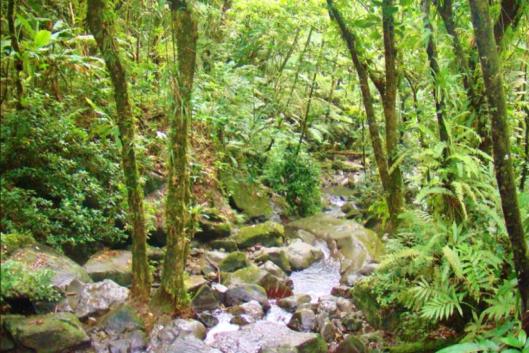In March 2014, more than 100 organizations from all over the world requested through an open letter that the Food and Agriculture Organization (FAO) of the United Nations, change its misleading definition of forests (1). FAO employs a reductionist definition based solely on the presence of trees, disregarding the fact that forests are a habitat for different kinds of flora and fauna, as well as the home of local communities. Under FAO’s definition, for example, large-scale monoculture plantations of fast-growing eucalyptus trees, managed with toxic agrochemicals, are regarded as ‘forests.’
In an article titled “Futures of Tropical Forests,” published in Biotropica, two researchers attached to the Centre for International Forestry Research (CIFOR) also argue that this definition is unacceptable (2). They show that in certain regions of the world, ‘forest’ areas are ‘created’ when industrial tree monocultures are introduced in areas that previously did not have much tree cover. Thus, areas like savannahs or natural pastures, which are ecologically as unique and rich as forests, are being replaced by monocultures. The conclusion is clear: the present definition of forests must be changed to one that is closer to reality.
But how can this be done? The same researchers put forward another reference state for forests; they suggest ‘old growth forest.’ This would be an area with naturally regenerated trees older than the harvest cycles used in the timber production logic, which aims to maximize volume of merchantable wood. Old growth forests would be much more biodiverse than those under timber extraction management. This new reference, according to the authors, would result in forests more resistant to environmental shocks and stresses, an important consideration in times of climate change.
The harvest cycle of tree monocultures is certainly short. In spite of campaign slogans like “Our future has roots,” used by eucalyptus companies such as Aracruz Celulose (now Fibria) in Brazil, nobody is fooled: the harvest cycle nowadays in eucalyptus monocultures, for instance, can be as incredibly short as 2 years in plantations for energy purposes, or 5 to 7 years for wood pulp or cellulose. In areas of ‘sustainable forest management,’ trees hundreds of years old are selectively logged for timber on 15 to 30 year cycles, which also results in forest destruction, although more slowly (see WRM Bulletin 197).
The CIFOR researchers point out that the people who have so far discussed and decided on the future of the world’s tropical forests are often outsiders. Monoculture tree plantations for wood emerged in Europe and sparked the launch of a new university degree, that of forest engineering. A more local viewpoint would prevent companies and foreign consultants from generalizing weak and even deceptive arguments: for instance, the argument that introduction of industrial monoculture ‘forests’ would reduce pressure on native old-growth forests. The authors found that this argument held only in New Zealand, but was found to be false in other countries with other contexts. This is what several organizations that support struggles against industrial tree monocultures, including WRM, have been saying for many years.
In order for forests to have a future, the researchers stress the need to understand the essential functions performed by forests and to recognize their many benefits. This means not only widening the viewpoint of forest engineers – who generally aim exclusively at maximizing wood production – but also involving other viewpoints, with consideration for the multiple dimensions of forests – social, cultural, even religious, and ecological. The authors defend the need for people actually living in the region to manage forests, including the local communities that depend on them. However, as WRM and other organizations have shown, this viewpoint has been hampered by unjust and very unequal power relations, which have resulted in violence. A small group of politically influential private interests always seek to debilitate local communities and their arduous struggle to prevent the destruction of the forests.
This bulletin seeks to contribute to showing the value of forests and their wide diversity, as well as their devastation and on-going resistance struggles. For forests to put down roots and become beneficial, communities, too, must be able to put down their roots.
Perhaps this is a good illustration of the CIFOR researchers’ message. In other words, a forest, to be a forest, must put down roots. This is what makes it possible for local communities, too, to put down roots and establish coexistence with the forest. In the context of monocultures or other intensive management regimes with short, destructive harvesting cycles, it is obviously impossible to put down roots, in spite of the propaganda of the kind used by Aracruz Celulose.
The problem is that the few people who currently hold the power to define the future of forests at present do not see things this way. They are, in a sense, blind, because they focus their view only on productivity and timber yield and the profits to be made in export markets. However, for a long time, millions of people who depend on forests have been aware of their importance for their lives, and they fight daily to defend them.
(1) Open letter to FAO, WRM, http://wrm.org.uy/all-campaigns/open-letter-to-fao-on-the-occasion-of-the-international-day-of-forests-2014/
(2) Putz, Francis and Claudia Romero. “Futures of Tropical Forests (sensu lato)”, Biotropica 46 (4): 495-505, 2014. http://onlinelibrary.wiley.com/doi/10.1111/btp.12124/abstract
